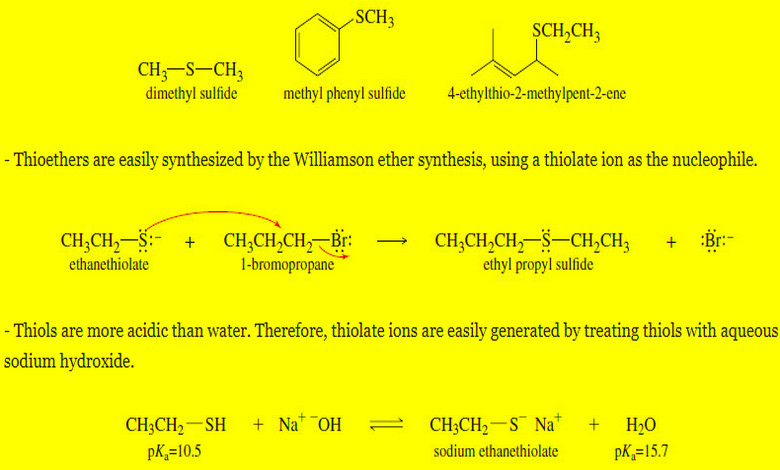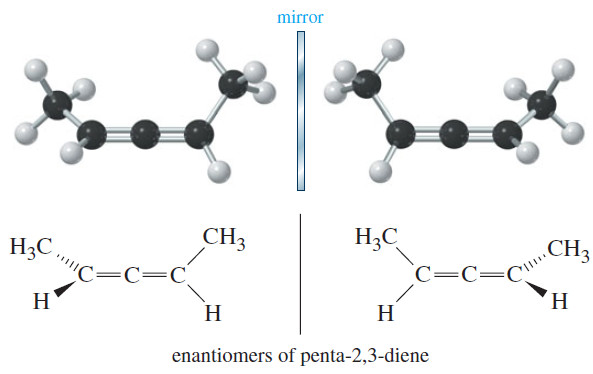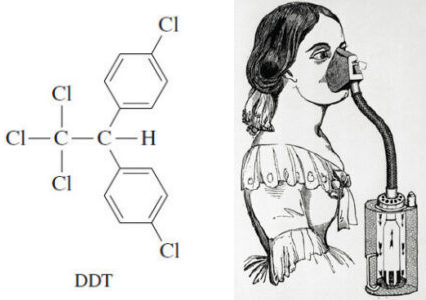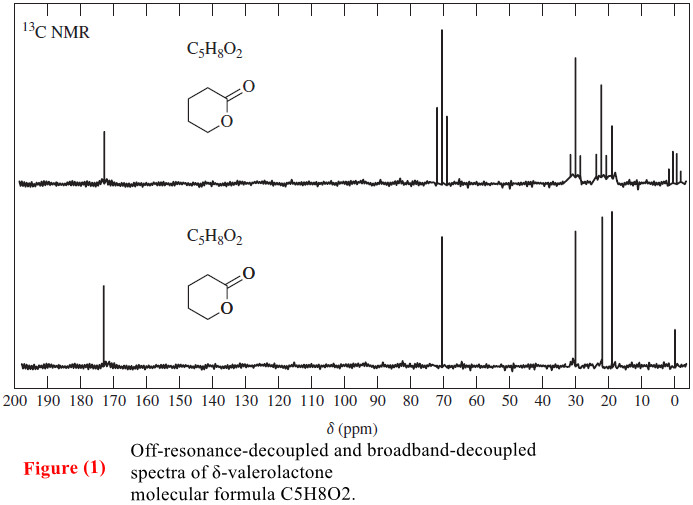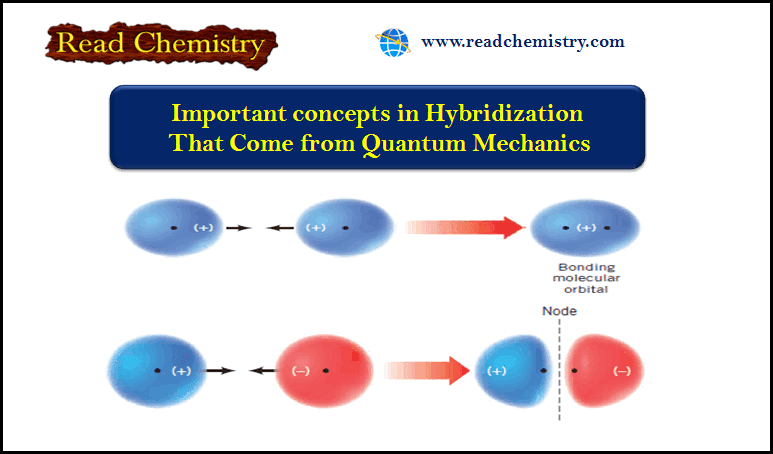Organic Chemistry
Resonance Theory
Introduction to Resonance (Resonance in carbonate ion (CO32-)
** Often more than one equivalent Lewis structure can be written for a molecule or ion. Consider, for example, the carbonate ion (CO32-). We can write three different but equivalent structures, 1–3:
** Notice two important features of these structures:
(1) First,each atom has the noble gas configuration.
(2) Second, and this is especially important, we can convert one structure into any other by changing only the positions of the electrons. We do not need to change the relative positions of the atomic nuclei. For example, if we move the electron pairs in the manner indicated by the curved arrows in structure 1, we change structure 1 into structure 2:
In a similar way we can change structure 2 into structure 3:
Structures 1–3, although not identical on paper, are equivalent. None of them alone, however, fits important data about the carbonate ion.
** X-ray studies have shown that:
(a)carbon–oxygen double bonds are shorter than single bonds.
(b) The same kind of study of the carbonate ion shows, however, that all of its carbon–oxygen bonds are of equal length. One is not shorter than the others as would be expected from representations 1, 2, and 3.
** Clearly none of the three structures agrees with this evidence. In each structure, 1–3, one carbon–oxygen bond is a double bond and the other two are single bonds. None of the structures, therefore, is correct. How, then, should we represent the carbonate ion?
** One way is through a theory called resonance theory. This theory states that whenever a molecule or ion can be represented by two or more Lewis structures that differ only in the positions of the electrons, two things will be true:
(1) None of these structures, which we call resonance structures or resonance contributors, will be a realistic representation for the molecule or ion. None will be in complete accord with the physical or chemical properties of the substance.
(2) The actual molecule or ion will be better represented by a hybrid (average) of these structures.
Note (1): Resonance structures, then, are not real structures for the actual molecule or ion; they exist only on paper. As such, they can never be isolated. No single contributor adequately represents the molecule or ion. In resonance theory we view the carbonate ion, which is, of course, a real entity, as having a structure that is a hybrid of the three hypothetical resonance structures.
What would a hybrid of structures 1–3 be like?
** Look at the structures and look especially at a particular carbon–oxygen bond, say, the one at the top. This carbon–oxygen bond is a double bond in one structure (1) and a single bond in the other two (2 and 3).
** The actual carbon–oxygen bond, since it is a hybrid, must be something in between a double bond and a single bond. Because the carbon–oxygen bond is a single bond in two of the structures and a double bond in only one, it must be more like a single bond than a double bond. It must be like a one and one-third bond. We could call it a partial double bond. And, of course, what we have just said about any one carbon–oxygen bond will be equally true of the other two.
** Thus all of the carbon–oxygen bonds of the carbonate ion are partial double bonds, and all are equivalent. All of them should be the same length, and this is exactly what experiments tell us. The bonds are all 1.28 Ao long, a distance which is intermediate between that of a carbon–oxygen single bond (1.43 Ao) and that of a carbon–oxygen double bond (1.20 Ao). One angstrom equals 1 × 10-10 meter.
Note (2): One other important point: by convention, when we draw resonance structures, we connect them by double-headed arrows (↔) to indicate clearly that they are hypothetical, not real.
** For the carbonate ion we write them this way:
** We should not let these arrows, or the word “resonance,” mislead us into thinking that the carbonate ion fluctuates between one structure and another.
** These structures individually do not represent reality and exist only on paper; therefore, the carbonate ion cannot fluctuate among them because it is a hybrid of them.
Note (3): Resonance structures do not represent an equilibrium.
** In an equilibrium between two or more species, it is quite correct to think of different structures and moving (or fluctuating) atoms, but not in the case of resonance (as in the carbonate ion).
** Here the atoms do not move, and the “structures” exist only on paper.
Note(4): How can we write the structure of the carbonate ion in a way that will indicate its actual structure?
(a) We may do two things: we may write all of the resonance structures as we have just done and let the reader mentally fashion the hybrid, or we may write a non- Lewis structure that attempts to represent the hybrid.
(b) For the carbonate ion we might do the following:
(c) The bonds in the structure on the left are indicated by a combination of a solid line and a dashed line. This is to indicate that the bonds are something in between a single bond and a double bond.
(d) As a rule, we use a solid line whenever a bond appears in all structures, and a dashed line when a bond exists in one or more but not all. We also place a δ–(read partial minus) beside each oxygen to indicate that something less than a full negative charge resides on each oxygen atom. In this instance, each oxygen atom has two-thirds of a full negative charge.
(e) Calculations from theory show the equal charge density at each oxygen in the carbonate anion.
Figure shows a calculated electrostatic potential map of the electron density in the carbonate ion. In an electrostatic potential map, regions of relatively more negative charge are red, while more positive regions (i.e., less negative regions) are indicated by colors trending toward blue. Equality of the bond lengths in the carbonate anion (partial double bonds as shown in the resonance hybrid above) is also evident in this model
The Use of Curved Arrows: How To Write Resonance Structures
As we have mentioned earlier, curved arrows are often used in writing resonance structures, and as we shall see in Section 3.2 they are essential in writing reaction mechanisms. Let us now point out several important things to remember about their use.
(1) Curved arrows are used to show the movement of both bonding and unshared electrons.
(2) A double-barbed curved arrow shows the movement of two electrons (an electron pair). [Later, we will see that a single-barbed arrow can be used to show the movement of a single electron.]
(3) A curved arrow should originate precisely at the location of the relevant electrons in the initial formula and point precisely to where those electrons will be drawn in the new formula.
(4) A new formula should be drawn to show the result of the electron shift(s). All formulas should be proper Lewis structures and should include formal charges as appropriate. The maximum number of valence electrons should not be exceeded for any atom in a formula.
Rules for Writing Resonance Structures
(1) Resonance structures exist only on paper.
** Although they have no real existence of their own, resonance structures are useful because they allow us to describe molecules and ions for which a single Lewis structure is inadequate.
**We write two or more Lewis structures, calling them resonance structures or resonance contributors.
** We connect these structures by double-headed arrows (↔), and we say that the real molecule or ion is a hybrid of all of them.
(2) We are only allowed to move electrons in writing resonance structures.
** The positions of the nuclei of the atoms must remain the same in all of the structures.
** Structure 3 is not a resonance structure of 1 or 2, for example, because in order to form it we would have to move a hydrogen atom and this is not permitted:
** Generally speaking, when we move electrons, we move only those of multiple bonds (as in the example above) and those of nonbonding electron pairs.
(3) All of the structures must be proper Lewis structures.
We should not write structures in which carbon has five bonds, for example:
(4) The energy of the resonance hybrid is lower than the energy of any contributing structure.
** Resonance stabilizes a molecule or ion. This is especially true when the resonance structures are equivalent. Chemists call this stabilization resonance stabilization. If the resonance structures are equivalent, then the resonance stabilization is large.
** In the next subjects we shall find that benzene is highly resonance stabilized because it is a hybrid of the two equivalent forms that follow:
(5) The more stable a structure is (when taken by itself), the greater is its contribution to the hybrid.
How Do We Decide When One Resonance Structure Contributes More to the Hybrid Than Another?
The following rules will help us:
(1) The more covalent bonds a structure has, the more stable it is.
** Consider the resonance structures for formaldehyde below. (Formaldehyde is a chemical used to preserve biological specimens.)
** Structure A has more covalent bonds, and therefore makes a larger contribution to the hybrid. In other words, the hybrid is more like structure A than structure B.
These structures also illustrate two other considerations:
(2) Charge separation decreases stability.
** It takes energy to separate opposite charges, and therefore a structure with separated charges is less stable.
** Structure B for formaldehyde has separated plus and minus charges; therefore, on this basis, too, it is the less stable contributor and makes a smaller contribution to the hybrid.
(3) Structures in which all the atoms have a complete valence shell of electrons (i.e., the noble gas structure) are more stable.
Look again at structure B. The carbon atom has only six electrons around it, whereas in A it has eight. On this basis we can conclude that A is more stable and makes a larger contribution.
Solved problem
Problem: The following is one way of writing the structure of the nitrate ion:
However, considerable physical evidence indicates that all three nitrogen–oxygen bonds are equivalent and that they have the same length, a bond distance between that expected for a nitrogen–oxygen single bond and a nitrogen– oxygen double bond. Explain this in terms of resonance theory.
Strategy and Answer:
** We recognize that if we move the electron pairs in the following way, we can write three different but equivalent structures for the nitrate ion:
** Since these structures differ from one another only in the positions of their electrons, they are resonance structures or resonance contributors.
** As such, no single structure taken alone will adequately represent the nitrate ion. The actual molecule will be best represented by a hybrid of these three structures.
** We might write this hybrid in the following way to indicate that all of the bonds are equivalent and that they are more than single bonds and less than double bonds. We also indicate that each oxygen atom bears an equal partial negative charge. This charge distribution corresponds to what we find experimentally.
Reference: Organic chemistry / T.W. Graham Solomons , Craig B.Fryhle , Scott A.snyder , / ( eleventh edition) / 2014.


















